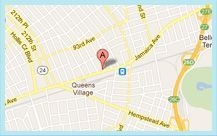Pathophysiology
The aqueous humor is a clear liquid that fills the anterior and posterior chambers of the eye. It is produced at a rate of approximately 2 mcL/min by the ciliary processes and is essentially a modified ultrafiltrate of plasma. Aqueous humor flows from the posterior chamber through the pupil into the anterior chamber and then into the trabecular meshwork. The meshwork is essentially a filter that functions as a one-way valve. The ciliary muscle has insertions on the meshwork and ciliary contraction helps pump aqueous through the mesh, increasing the rate of drainage.
In the corner angle of the anterior chamber, the aqueous enters the canal of Schlemm and then drains into episcleral veins. Small amounts of aqueous humor also leave the eye between the bundles of the ciliary muscle and through the sclera. Under normal circumstances, this secondary drainage amounts to about 20% of the outflow facility.
IOP is determined by the balance between production and removal of aqueous humor. Normal IOP is 10-22 mm Hg.
Individuals who have a shallow or narrow anterior chamber or a thickened lens are predisposed to acute closed-angle glaucoma because the iris is in close opposition to the chamber angle and cornea. If the lens is intumescent or the lens/iris diaphragm is anteriorly placed as in high hyperopes, some resistance to flow of the aqueous humor from the posterior to the anterior chamber may be present (pupillary block). Conditions associated with this predisposition are hypermetropia (due to the shape of the cornea) and aging (lens thickness increases slightly with age and pushes the iris forward). In such predisposed individuals, an acute attack of closed-angle glaucoma usually is precipitated when pupillary dilatation increases the tightness of contact between the iris and the lens, thus, increasing the pupillary block. For any given geometry, relative pupillary block and peripheral laxity of the iris are maximal when the iris is in mid dilation.
When aqueous is secreted more rapidly than it can be drained, pressure builds up behind the iris and causes it to bulge forward, giving an appearance that is referred to as “iris bombe.” This acute bulging further closes the angle through which the aqueous must drain between the peripheral iris and the cornea, increasing the pupillary block still further. With no available pathway for drainage, IOP rises, and may exceed 60-70 mm Hg. This increased pressure causes damage to the corneal endothelium, lens, iris, optic nerve, and the retinal ganglion cell layer.
Any stimulus that causes pupillary dilation can trigger an acute attack, including instillation of mydriatic drops for ophthalmologic examination. Dim lighting, emotionally upsetting events, and the use of anticholinergic or sympathomimetic medications have all been implicated as triggers of acute angle-closure glaucoma. Multiple reports exist of glaucoma triggered by nebulized anticholinergic and beta-agonist medications. Intranasal cocaine for nasal procedures has caused acute attacks, as has oral paroxetine.
Acute iatrogenic glaucoma occurs when mydriatic agents placed in the eye for diagnostic or therapeutic purposes precipitate an acute attack. To avoid this, the anatomy of the angle should be assessed prior to instillation of mydriatic agents. A narrow angle may be detected clinically by shining a light source across the cornea from the temporal side. Illumination of the entire iris indicates a flat iris, deep chamber, and a wide anterior chamber angle. If the central part of the iris is bowed forward such that it blocks light from shining across into the nasal aspect of the iris, the angle is narrow.
A more accurate estimation of the anterior chamber angle can be made using the slit lamp and a technique described by Van Herick. Gonioscopy allows for the most accurate measurement of this angle. The 2 main classifications of anterior chamber depth are described by Schaffer and Spaeth.
Adrenergic agents are particularly likely to cause pupillary block because their action on the dilator muscle actively pulls the iris back against the lens. Anticholinergic agents produce pupillary dilatation by inhibiting the action of the constrictor muscle only, resulting in less risk of pupillary block.

Contact Us





